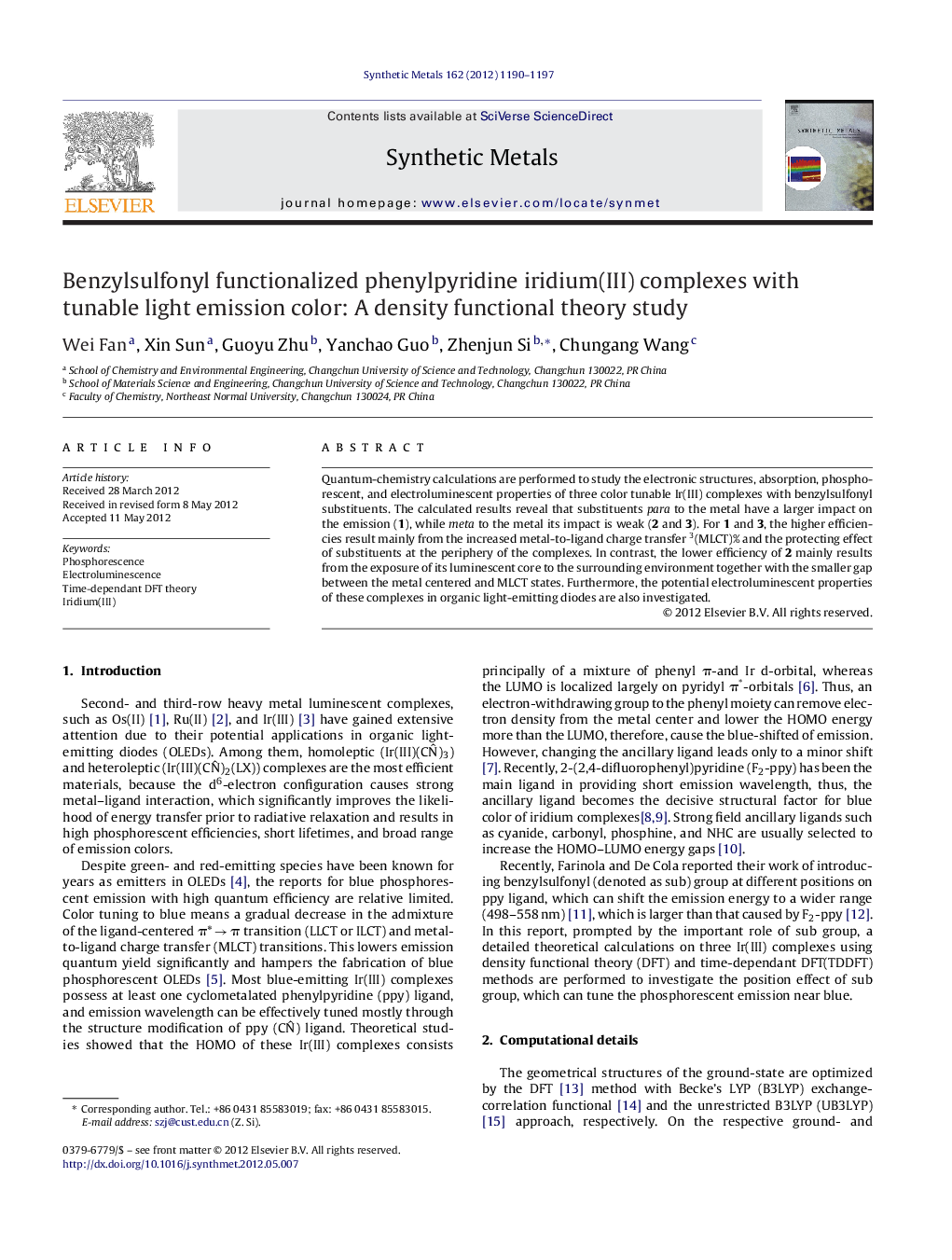| Article ID | Journal | Published Year | Pages | File Type |
|---|---|---|---|---|
| 1441667 | Synthetic Metals | 2012 | 8 Pages |
Quantum-chemistry calculations are performed to study the electronic structures, absorption, phosphorescent, and electroluminescent properties of three color tunable Ir(III) complexes with benzylsulfonyl substituents. The calculated results reveal that substituents para to the metal have a larger impact on the emission (1), while meta to the metal its impact is weak (2 and 3). For 1 and 3, the higher efficiencies result mainly from the increased metal-to-ligand charge transfer 3(MLCT)% and the protecting effect of substituents at the periphery of the complexes. In contrast, the lower efficiency of 2 mainly results from the exposure of its luminescent core to the surrounding environment together with the smaller gap between the metal centered and MLCT states. Furthermore, the potential electroluminescent properties of these complexes in organic light-emitting diodes are also investigated.
Graphical abstractFigure optionsDownload full-size imageDownload as PowerPoint slideHighlights► Color tunable materials are relatively limited investigated. ► Position effect of benzylsulfonyl group can cause blue-emitting emission in the wide range (498–558 nm). ► Position effect on phosphorescent and electroluminescent properties is studied.
